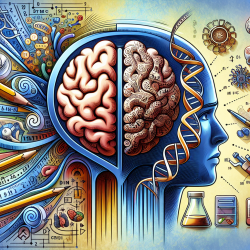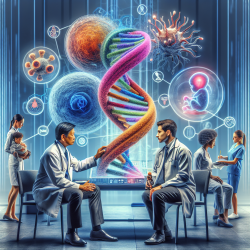Understanding DNA Methylation Episignatures in Neurodevelopmental Disorders
As a practitioner in the field of neurodevelopmental disorders (NDDs), staying abreast of the latest research can significantly enhance your ability to diagnose and treat patients effectively. A recent review published in the International Journal of Molecular Sciences delves into the role of DNA methylation episignatures in NDDs associated with large structural copy number variants (CNVs). This research highlights the clinical implications of these findings and suggests pathways for integrating them into practice.
What Are DNA Methylation Episignatures?
DNA methylation is an epigenetic mechanism that involves the addition of a methyl group to DNA, affecting gene expression without altering the DNA sequence. Episignatures are unique patterns of DNA methylation that are associated with specific genetic conditions. These patterns can serve as biomarkers, aiding in the diagnosis of complex disorders like NDDs.
The Role of CNVs in NDDs
Copy number variants (CNVs) are structural changes in the genome that result in the duplication or deletion of large DNA segments. These changes can significantly impact gene dosage, leading to the development of NDDs. The review article emphasizes the importance of understanding CNVs and their association with DNA methylation patterns in diagnosing and managing NDDs.
Clinical Implications and Applications
For practitioners, integrating DNA methylation episignatures into clinical practice can offer several benefits:
- Improved Diagnostic Accuracy: Episignatures can help differentiate between disorders with overlapping symptoms, providing a more precise diagnosis.
- Personalized Treatment Plans: Understanding the specific genetic and epigenetic landscape of a patient can guide tailored interventions.
- Enhanced Research Opportunities: Encouraging further research into episignatures can lead to the discovery of new treatment targets and therapies.
Encouraging Further Research
While the current research provides a strong foundation, there is a need for ongoing investigation into the role of episignatures in NDDs. Practitioners are encouraged to collaborate with researchers and contribute to studies that explore the clinical utility of these biomarkers.
Conclusion
Integrating the insights from this research into your practice can enhance your diagnostic capabilities and improve patient outcomes. By staying informed and engaging in further research, you can contribute to the advancement of knowledge in the field of neurodevelopmental disorders.
To read the original research paper, please follow this link: DNA Methylation Episignatures in Neurodevelopmental Disorders Associated with Large Structural Copy Number Variants: Clinical Implications.










